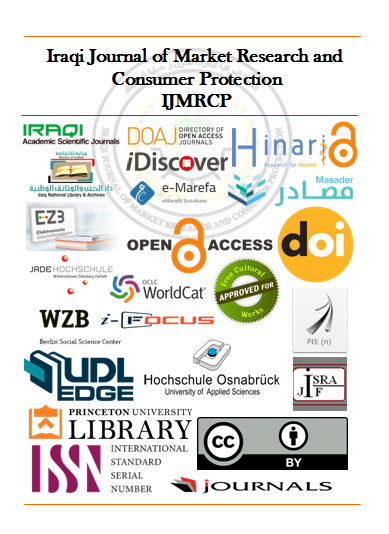SUSTAINABILITY THE WATER PRODUCTIVITY AND SORGHUM YIELD USING AQUACROP MODEL UNDER SURFACE DRIP IRRIGATION SYSTEM IN BAGHDAD GOVERNATE
SUSTAINABILITY THE WATER PRODUCTIVITY AND SORGHUM YIELD USING AQUACROP MODEL UNDER SURFACE DRIP IRRIGATION SYSTEM IN BAGHDAD GOVERNATE
Keywords:
water productivity, Sorghum, Aqua Crop program, Baghdad governateAbstract
The experiment was conducted to study the water productivity of the sorghum crop in Al-Jadriya region for the spring season in Al-Jadriya/ University of Baghdad. Experiment treatments included six irrigation levels: Treatment of 100% at 50% depletion of the available water and compensation in terms of accumulate evaporation from the evaporation basin class A to the field capacity, deficit irrigation treatments 80, 70, 60, 50, and 40% from complete irrigation were applied, using the Completely Randomized Block Design with three replicates. The seeds of the crop were planted on 13-3-2022 and harvested on 15-7-2022. Future studies were conducted to extract the expected values for the study year and the years coming to 2050 for the RCP 4.5 and RCP 8.5 scenarios, using the AquaCrop model and the results were;
- The highest depth of water added was 487 mm at 100% full irrigation treatment, then the values decreased to 413, 377, 340, 303 and 267 mm season-1 for 80, 70, 60, 50 and 40% deficit irrigation coefficients, respectively.
- Deficit irrigation of 80 and 70% of treatments outperformed the highest average water productivity of 1.17 kg m-3 for both treatments. There was a slight increase in rainfall rates (2020-2030) and an almost non-existent decrease for the period (2040-2050) of 0.09 and 0.03 mm decrease, respectively, compared to the base period (1985-2005).
- The model was able to simulate the productivity of grain and water yield of white corn in an excellent way due to the high compatibility between the measured field values and the predicted values, the measured grain yield values were (5.79-1.64) ton ha-1, the simulation values amounted to (5.70-3.66) ton ha-1, while the water productivity was measured between (0.87 - 1.17) kg m-3 and the simulation values amounted to (0.96-2.12) kg m-3.
- The productivity values of the sorghum crop ranged between (6.72) ─ (3.84) ton ha-1 and a relative change ranged between [(-5.79) ─ (-12.73) %] at the scenario (RCP 4.5), while at the scenario (RCP 8.5) for the time period (2040-2050), the productivity values ranged between (4.92-2.44) ton ha-1, with a relative change ranging between [(-0.49) ─ (-4.43) %].
Published
Issue
Section
License
Copyright (c) 2025 Iraqi Journal of Market Research and Consumer Protection

This work is licensed under a Creative Commons Attribution 4.0 International License.





